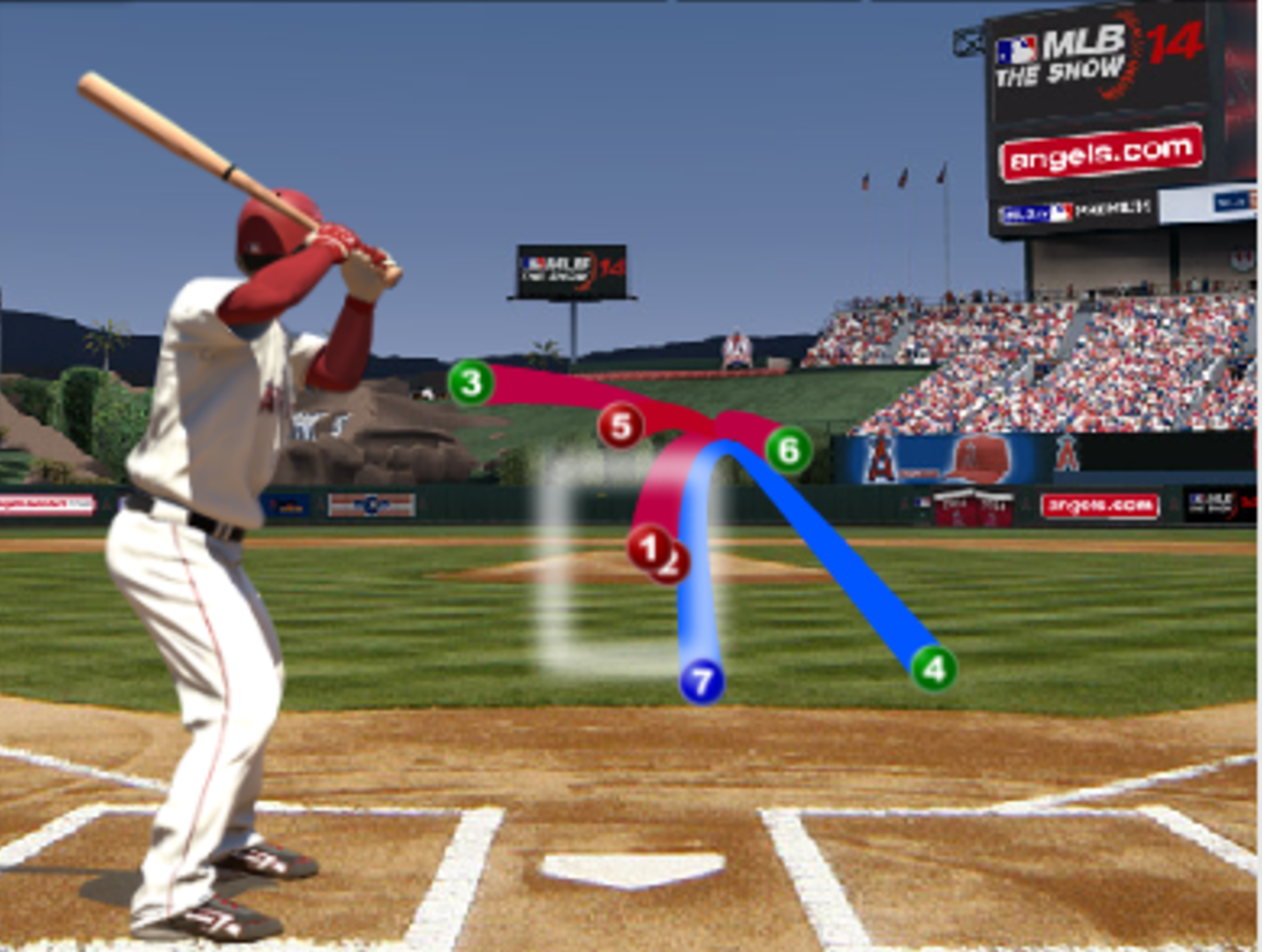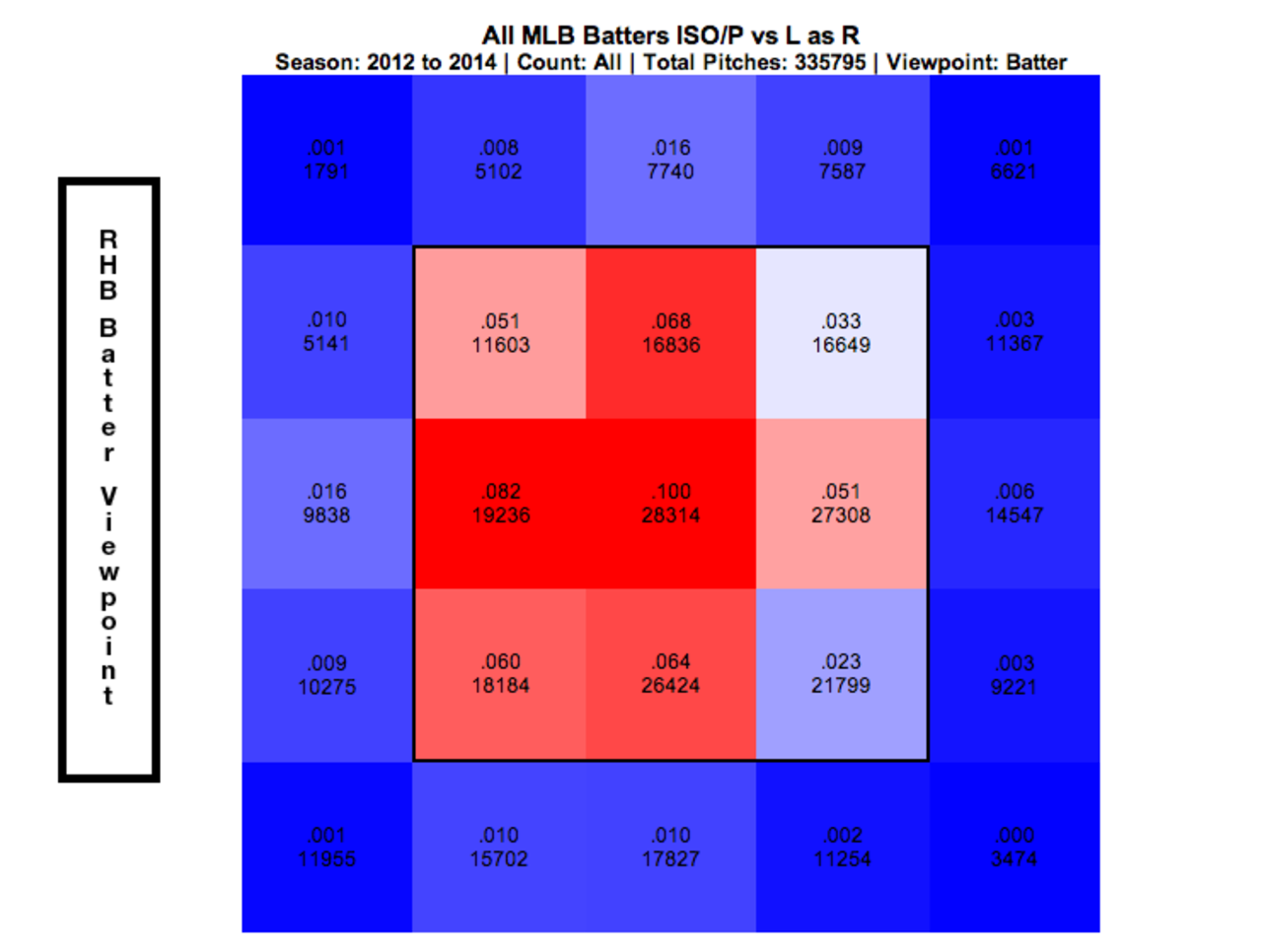An inside look at the best at bat of the 2014 season
If baseball was fair, Chris Sale’s line from his start Saturday night would better reflect his dominance. Instead, he set a season-high for runs allowed with five and hits allowed with seven.
7 IP, 7 H, 5 R, 1 BB, 6 K is a nice outing but Sale pitched better than “nice” against the Angels.
Actually, “nice” does him a great disservice. Through the first seven innings of Sale’s start against the Angels in Anaheim, the lanky lefty was barely troubled by the powerful Halos lineup. His defense and a free pass issued to Mike Trout caused him strain in the first inning, but it took Sale only 41 pitches to register the 15 outs between the second-and-sixth innings. He looked as sharp as any pitcher I’ve seen this year.
It took more than one pitch to undo all that good work but a single pitch made all the difference.
It was a changeup down and away, thrown to a nearly ideal spot. A pitch Sale himself described to reporters as “a good pitch to a better hitter.’
The Improbability of the Result
Sale’s right, it is a good pitch. The pitch -- it’s execution and sequencing -- coupled with Trout’s ability to hit a two-iron 420 feet off his shoe tops in a huge situation, as a friend described it on twitter, cannot be overlooked. The pitch really was on his shoe tops, measured a little more than 18 inches off the ground and on the outside half of the plate.

HItting any pitch in that spot is difficult. Hitting over the fence in center field is astounding. Hitting it for a game-tying grand slam in the bottom of the 8th inning? Wow.
From Fangraphs, below is a strike zone chart tracking pitches from 2012 to yesterday. It shows how difficult pitches thrown down below the strike zone and on the outer third are to drive with power.

The details are at the top of the diagram, if you’re so inclined. If you’re aren’t, just know blue sections are where right-handed batters struggle to drive the baseball in a meaningful way.
A grand total of 13 right-handed batters this year hit balls out of the park thrown in that spot. 12 if you discount Trout, who’s now done it twice. Only five came off left-handed pitchers, only two others on changeups. Just one went out to center, the one featured above.
None came with the bases loaded, down four runs in the 8th inning, against Chris Sale. Only Trout can claim that distinction.
The Blip in the Process
This grand slam isn’t as much about the destination (the rocks in center field) as much as the journey. Trout hit the seventh pitch from Sale in this at bat, a changeup as noted above. The Angels’ center fielder battled back from being behind 0-2 in the count before golfing game-tying change.
In their first two meetings of the night, Sale threw almost only fastballs to Trout, opting for a changeup (at 1-1 in Trout’s walk and doubled up to start the at bat in that ended with a liner to the track in center.)
It wasn’t until the third at bat, another Trout fly out, that Sale showed him his slider (dropping it in for a first pitch strike and then getting the soft pop out right-center).
A few times during the game, it seemed Sale had Trout set up perfectly and the slider could finish the job. Having already shown him a change that missed away or moved his feet with an inside fastball, the slider seemed like the perfect pitch call from the comfort of my couch.
So far in 2014, Sale uses his changeup as the main weapon against righties, cutting his slider usage almost in half, likely a safekeeping measure against injury. Sale sprinkled 14 sliders in of his 118 pitches on the night, just enough to keep them honest. It’s a luxury he can afford as his fastball is a great pitch on its own and his emergent changeup works so well against righties.
In each of Trout’s three at bats on the night, Sale showed him a different pitch to open the encounter. Fastball in the first inning, changeup in the third, slider in the seventh.
This diagram from Brooks Baseball breaks down the pitches from the at bat by type and location.

The Sox battery opted for two straight fastballs that caught a lot of the plate but, at 95/96 mph, Trout could only foul them off. Ahead 0-2, Sale elevated a fastball that nearly hit Trout. This setup the changeup away that Sale overthrew and Trout watched with ease.
With the count now 2-2, Sale went again to the fastball up in the zone and again Trout managed to foul it straight back. Trout looks keyed on the fastball, as getting to 96 that high in the zone is no mean feat - perhaps a slider here might finish the job?
Instead it’s a fastball that misses high and away. Full count. Catcher Tyler Flowers calls for the changeup. Sale agrees. Heartbreak ensues.
If you’re a White Sox fan looking for someone to blame, you can question the bench’s decision to leave Sale in for Trout. You can wonder about Sale’s unwillingness to throw a slider in the fateful at bat. You could reach for these things if you’re desperate, because the reality of the situation is both calls were sound. Just as the he said postgame, Sale made a good pitch to a better hitter.
Not many hitters are going to do that kind of damage with that kind of pitch. Even Trout, striking out as often as he does, could easily swing through it if the situation repeated today. But he didn’t. He hit a home run and treated us to the single best plate appearance of the season so far.
Two of best and brightest stars in the game today put on a show, with the edge going to the best in the game after a battle for the ages.